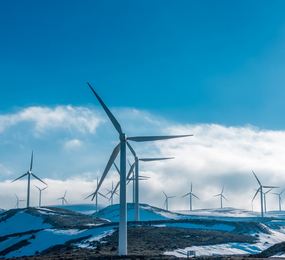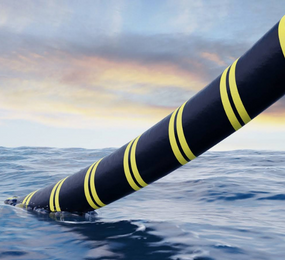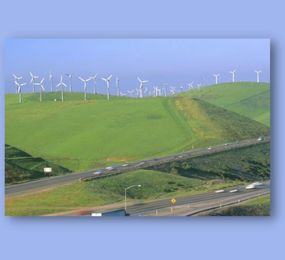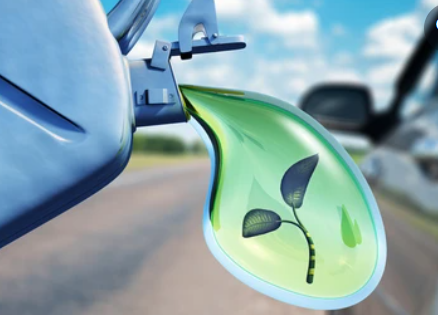Offshore Wind Turbine Blade Inspections, Repair and Reliability
Because harsh conditions at sea cause materials to degrade considerably quicker than on land, offshore wind farms are especially vulnerable to maintenance concerns. Specific stressors mentioned include increased UV radiation exposure, strong wind speeds, and salt-laden air. They claim that even modest surface degradation might cause turbulence, resulting in reduced efficiency. Historically, industrial climbers were employed to check turbine rotor blades on a regular basis. Climbers often tap on the structure and examine its visual appearance for evidence of coating delamination and other types of damage.
However, due to the limited accessibility of these wind farms and the unpredictability of marine weather conditions, operators find it difficult to plan for and pay for the deployment of these maintenance teams. For example, the project partners note that one typical issue is that operators would dispatch a maintenance crew to do an inspection, but then send them home without completing the task because the window of favorable weather for high-altitude operations is too short.
As a result, industry operators, they claim, are looking for alternative structural monitoring methods that are just as reliable as frequent inspections by industrial climbers but without the human danger.
Wind turbine check via drone
Wind turbine towers and rotor blades are vulnerable to weather conditions. Drone inspection delivers a visual or thermographic view of the components' status.
The Advantages of Drone Inspection
Wind turbine components must withstand hail, snow, lightning, rain, salt, and dust, to name a few. Using our drone inspection solution for visual inspection of on- and offshore wind turbines provides several advantages, including:
• 1. a safe working environment;
• 2. reduced downtime;
• 3. high quality images and video;
• 4. access to otherwise inaccessible areas;
• 5. dynamic surveying; and
• 6. preventive maintenance planning.
In comparison to traditional telephotography or other manual inspection methods, drone inspection is a more cost-effective and efficient inspection tool. With a drone inspection system, you may capture both optical and thermal photos of wind turbines for on-site study and evaluation of the rotor blades' condition.
Inspection using digital and/or infrared cameras
Depending on the breadth of the inspection work, the drone can be fitted with a digital camera, a thermographic camera, or a combination of the two while examining wind turbines. A digital camera records visual failures and damages to the tower, nacelle, rotor blades, and bolt jointing’s.
Thermographic inspection is a non-contact, non-destructive inspection technology that allows for the examination of a vast region of the blade for structural flaws and weaknesses. The drone uses infrared thermography to detect fluctuations in the surface temperature of objects such as rotor blades.
The advantages of infrared thermographic imaging are as follows:
• 1. Methods of non-contact and non-destructive inspection
• 2. Visualization of temperature on wide sections of a rotor blade for comparison
• 3. Examination, measurement, and observation of inaccessible or dangerous places
• 4. Detection of hidden faults and failures
• 5. Detection of objects in dark areas
• 6. Detection of erosion and corrosion
Acoustic Emissions Analysis
Meanwhile, the second option is integrating a nondestructive acoustic emission measurement technology within the rotor blade. This device detects internal damage, such as at the foot of the rotor blade, and acts as an early warning system.
The technology, developed by Fraunhofer IWES, entails connecting acoustic emission and piezoelectric sensors to the inside surface of the blades at structurally critical places, notably recognized weak points. The rotor hub houses the measurement computer equipment, which gathers and analyzes sensor data.
How is the wind blade repair procedure carried out?
Wind turbine blade maintenance may be divided into three distinct processes.
1. A. Surface scrubbing
The first step is to thoroughly clean the surface to remove lipids, insects, pollen, and other contaminants, fungus, as well as to see the genuine status of the surface. This cleaning is accomplished by the use of a specific spray substances that do not harm the coating's molecular structure
2. B. Damage identification
Following that, existing coating damage is found and studied, such as small holes (called lentils), cracks, rubs, fractures in the joints, corrosion, and so on.
3. C. Restore
We will execute some of the following repairs, depending on the severity of the damage and the layer or layers affected:
• 1. Using an 80-120 grain abrasive disc, sand the damaged section to remove the paint layers and chamfer the edges.
• 2. Fill and putty the damaged regions;
• 3. Outline the contour and sand the putty to smooth the surface with an abrasive disk of grain 80-120;
• 4. Apply the cap pores;
• 5. Sand the filling of the pores with an abrasive disk of grit 120-240;
• 6. Apply the topcoat; and
• 7. Apply external paint.
Offshore turbine blade dependability
The Fast program calculates the velocity of the floating wind turbine, and the Ansys software establishes the structural model of the blade. The failure probability of blade root overload, blade root fatigue, and excessive blade tip displacement are estimated. To explore the effects of floating foundation motion on blade reliabilities, fixed wind turbine blades and floating wind turbine blades are compared. According to the findings, the failure risk of blades supported by a floating foundation is larger than that of blades supported by a fixed foundation. To examine the impacts of the piezoelectric material on the blade reliabilities, floating wind turbine blades with different piezoelectric materials are investigated.
















